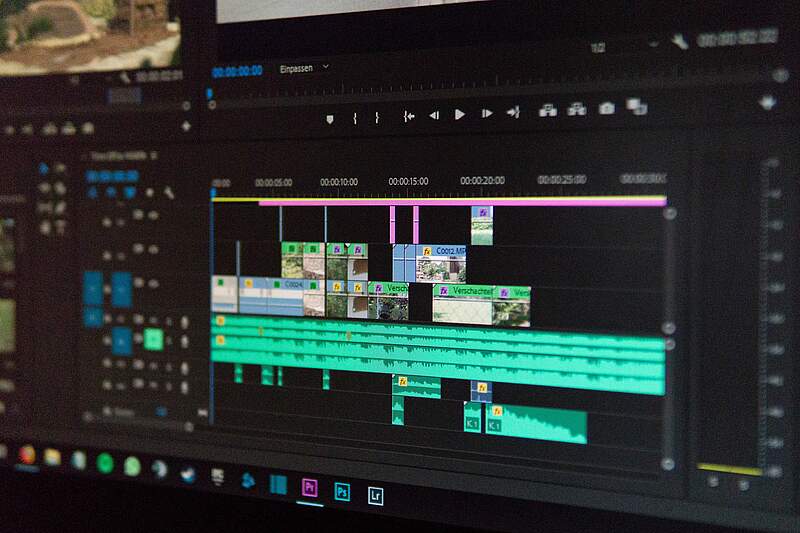The video platform YouTube is one of the largest search engines in the world today. Every month, the platform registers over 3 billion search queries. The volume of uploads - at around 300 hours per minute - also shows how important video content is today. Well-produced videos can be entertaining, educational and/or practical. It is therefore not surprising that the creation of video content is also at the top of the agenda for many B2B companies. Whether it's a product, explainer or image video: What is needed for successful implementation is first of all a well-founded video content strategy, and that is what we want to talk about here.
1. What is Video Marketing?
Video marketing has now established itself as a successful and modern component of marketing strategies. Many companies in B2C and B2B already use videos to communicate their messages to their target groups. Various formats have developed: in addition to purely promotional videos, many companies now rely on informative explainer videos. This enables companies with products and complex services that require explanation to position themselves as experts in their market.
Video marketing is particularly effective when used in conjunction with social media. Involving and entertaining video content is readily viewed and shared here, allowing your videos to achieve a wider reach.
Videos about case studies, tutorials and explanatory videos are also suitable for integration into a blog. This increases the time users spend on your website, which also has a positive effect on your onpage SEO.
2. Content creation
Before you can get started with the production of your videos, you should deal with the planning of your available resources, your target groups and the selection of subject areas.
Video production requires time for planning and project management as well as technical know-how for shooting and editing. Thus, personnel of your marketing team will be tied to the project. You may also want to use agency support, which will incur costs that you should factor into your resource planning.

3. Success factor 1: Target group
Think about which of your target groups you want to reach with your videos. Which topics are at the top of your target groups' agenda and should therefore be addressed? Which media do your target groups use to inform themselves? Do they use social media, for example? Then you should share your video content there.
What benefits should the target groups derive from the video? Is there a call-to-action they should follow? This could be, for example, downloading a white paper from your website or registering for one of your events.
You can discuss all these basic questions using a practical empathy map. We have already summarised how this works for you in the blog article "Understanding your target groups with the empathy map".
4. Success factor 2: Content
Derived from the results of your target group analysis, you can cluster the topic areas that are relevant to your target groups. This creates a practical video content plan for each target group. For each topic area, think about exactly what added value and benefits your company offers your target groups here and collect ideas in the team about which formats (e.g. tutorial or product film) you can use to convey your messages most convincingly.
5. Success factor 3: Involvement
Your goal is to inspire and convince your target groups with your videos. To achieve this, it is essential that your videos are as engaging as they are informative. Videos that tell a story are the most successful. That's why storytelling plays an important role in video marketing. Videos that explain a story in a coherent and comprehensible way stay longer in the viewer's memory because the brain processes them like real experiences. You can find out more about storytelling here.
The challenge is to develop a strong and comprehensible story. Many videos are based on the following approach: There is a main character - the hero of the story. The hero has a certain problem. The solution to the problem must succeed, because something is at stake for the hero. And of course your product, your service or your special process can solve the problem particularly well.
Transferred to your marketing for industrial applications, the solution to the problem can be, for example, time savings, a higher throughput or the optimisation of a process.
6. Success factor 4: Construction kit
Once you have found the content, added value and the right hook for your target groups, you can continue with the development of a kit. It is advisable to analyse well-produced videos from competitors in your industry.
What elements are used in successful videos? Summary, intro, main part and outro with a call-to-action give the video a structure.
What is the length of these videos? In general, the rule of thumb here is: as long as necessary, as short as possible - as long as it's not less than 6 minutes. Shorter videos are not rewarded by the Youtube algorithm.
Which media are used to explain complex issues? Are production processes presented as live-action film or animation? Which stylistic devices are most descriptive?
With the help of your construction kit, you can develop your first storyboard in the next step. We will tell you what you need to keep in mind in an upcoming blog post. Subscribe to our newsletter and stay up to date on B2B marketing.
7. Conclusion: With the right concept to successful Video content
The increasing number of searches in video platforms such as YouTube shows that video marketing should be an important part of your marketing mix. In the B2B sector, especially explainer and product videos as well as tutorials are established video formats to convince target groups of the benefits of your products and solutions. Before you start designing your first video, you should define a framework by looking at your target groups, content and added values and summarise them in a rough story. This will give you a good starting point for putting together a kit of video elements that will convince and engage your target groups to the maximum.

Yvonne Willmer
At Blaupause , my main task is to structure and manage complex projects for industrial clients. From time to time, however, I also write blog articles and social media posts on B2B topics that are close to my heart. Have you already put some of our suggestions into practice? Then I would be happy if you tell me about your results.

